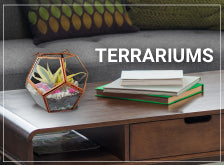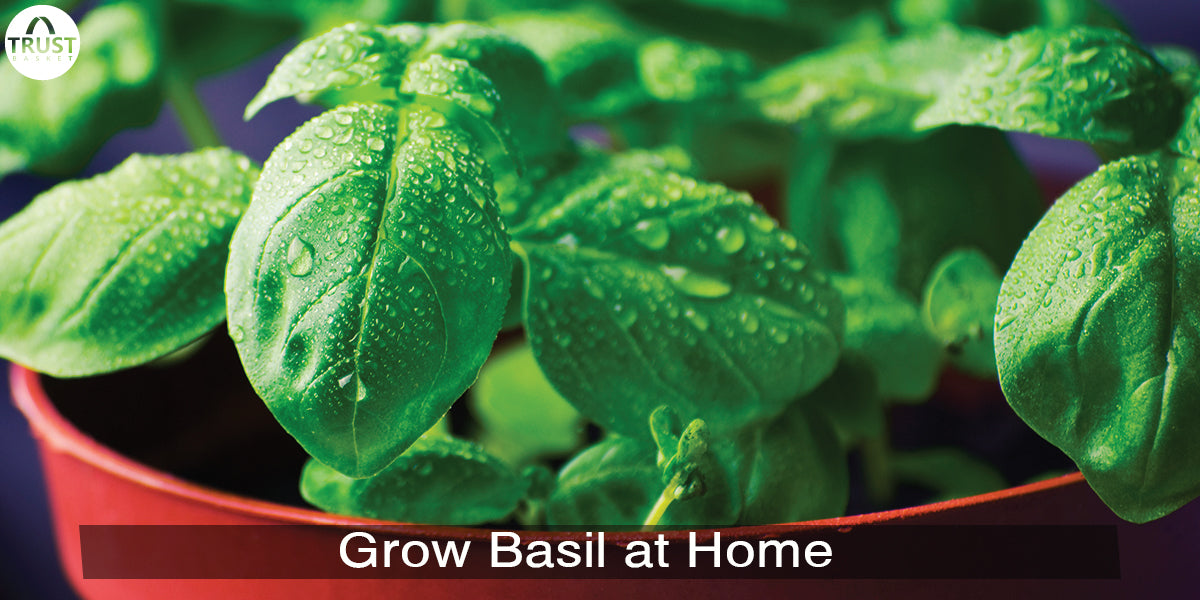How to Grow
Basil leaves: How to grow basil plant
Basil is an annual herbaceous plant. Its leaves and seeds are used worldwide in cuisine. It is mostly used in Thai dishes due to its sweet flavor and fragrance.
Botanical information
Botanical name: Ocimum basilicum
Family: Lamiaceae
Centre of origin: Central Africa
Other names: Vana Tulsi, Varvara Tulsi, common basil, sweet basil, Munjariki.
We now would like to share complete basil plant information. How easily you can now start Growing basil indoors. Container grown basil should be planted in well-drained, nutrient-rich soil. Sweet basil leaves are a bushy annual, 1 to 2 feet high, with glossy opposite leaves and spikes of white flowers. Basil leaves are used in cooking, imparting their anise (licorice) flavor to dishes.

-
Basil seeds are back in color. The seedlings are fragile and damage easily during the transplanting process, so many gardeners prefer to start basil plant from seed.

- Choose a terra cotta pot with proper drainage. Fill 3/4 of the container with soil. Allow the soil to remain loose; do not pack it into the container tightly. Tightly packed soil will make it difficult for your basil to take root. Basil likes rich, moist, but well-drained soil with a pH of 6.0 - 7.0.
- Sow a few seeds an inch or two (2.5 to 5 cms) apart if using a round container. Scatter seeds along the length of the container if using a long window box.
- Cover the basil seeds with 1/4 inch (6 1/3 mm) of fine soil or compost. Do not pack the soil down. Germination will happen within a week. Average room temperatures 60-75°F/16-24°C.
- Basil plant should be 6 to 12 inches apart to ensure adequate room for growth. Remove unwanted seedlings. If you cannot provide enough natural sunlight for your basil, use fluorescent grow lights or specially designed high-intensity lights instead.

- Harvest basil leaves by pinching them from the stems any time after the young plants have reached a height of 6 to 8 inches.
Begin using the leaves as soon as the plant is large enough to spare some. Collect from the tops of the branches, cutting off several inches. Handle basil plant delicately so as not to bruise and blacken the leaves.

Pests: Basil greens are usually attacked by leaf miners, aphids, and cutworms. These insects are attracted to basil plants due its sweet fragrance and flavor.
Diseases: sometimes Basil greens are attacked by leaf spots and yellowing of leaves and stunted growth. Twisting of the stem.
How to control pests and diseases: Use horticultural soap or neem oil solution once a week as a prophylactic spray for plants, in order to control the occurrence of pests and diseases. There are many chemical fungicide options for controlling pests and diseases. But for doing organic farming or to get chemical-free fruits and vegetables, always use neem oil or organic pest and disease controller
Health benefits:
Basil is a rich source of vitamin A, Vitamin K, Calcium, Iron, and Manganese. And has many health benefits. Here we tried to list down the health benefits.
1. May reduce the blood sugar level
2. May reduce stress level through aromatherapy of basil
3. May reduce bad cholesterol level
4. Basil can be used against infections and to treat wounds
5. Basil paste can be used as anti-acne
Most frequently asked questions:
1. How long does it take to grow basil from seeds?
Basil plants usually take 5-7 days for germination after sowing of seeds. It takes around 45 to 60 days for its growth and establishment. When a plant establishes well you can go for pinching of a pair of leaves.
2. Should I soak basil seeds before planting?
It is not necessary to soak the seeds in water before sowing. Because the seed coat will not be so hard, seeds will germinate even if you do not soak them in water. So we recommend direct sowing of seeds.
3. What is the best temperature for the germination of basil seeds?
Basil seeds are sensitive to cold temperature, they require little warm conditions for their germination. Basil seeds take 5-8 days for their germination. They germinate best at 19-21 degrees Celsius.
4. How to germinate basil seeds?
Usually, there will be different methods of seed germination. Seeds germinating in the sand, seed germination in tissue paper. etc. But if you are decided to grow basil outdoor sow the seeds directly on the soil at a depth of o.5 cm and cover them with soil properly. water regularly to keep the soil moist. Seeds require a good amount of moisture for their germination. so keep the seed bet wet, not soggy.
5. Do Basil leaves grow back when you pick them?
If you cut the tip of plants of basil, it encourages the growth of lateral branches or side branches in them. It increases the growth of side branches in them. So the answer is yes, Basil leaves grow back when you pick them.
6. Should you pick basil leaves from the top or bottom of the plant?
Always for basil and mint, you have to pick them from the top instead of the bottom. When you cut the tip or apical branches it supports the growth of lateral branches and makes the plant bushy.
Popular Searches: Garden Accessories for Sale, Compost Bin India, Plastic Flower Pots Online, Contemporary Plant Pots, Hanging Pots Online, Colourful Plant Pots, Bird Feeders Online, Rectangular Planters Online, Small Pots Online, Flower Pots Online, Kitchen Waste Compost Bin, Balcony Railing Planter




Thanks for your suggestions..
We are a kitchen garden Assoc..in Meerut. Pls suggest other imp. Valuable tips. Thanks
At Hyderabad can assist for business promotion educating customers and can provide you services you required.
hi, i need sm herb plants rosemary, basil, thyme coriander and mint, for my home gaden, i wud like to plant them in ny rail planter pots n some pretty flowering plants too for my rail planters
At a garden centre I got a special device for attracting the fruit flies that lay their eggs in or on the guava fruit when they are still raw. The device has to be suspended in the tree and has a container in which you must put some soapy water. A tablet of some chemical Is made to hang over the water and this attracts the fruit flies which fall into the water
Hi, plz tell me how to save guava tree fruits from small inects which are present inside the fruits. Can this neem oil help to get rid of this problem??